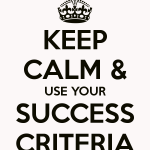As a project manager you often need to incorporate organizational change management (OCM) in your project plan and schedule. But what is the best way to do so? How can you make sure you have all the bases covered (i.e., your project plan is “robust”)?
I have seen that lack of knowledge cause some confusion and anxiety among some PMs. And the result was often reluctance by these PMs to incorporate OCM fully into their project plans, to their own detriment.
However, that does not have to be the case. There are a few simple guidelines you can follow to make sure OCM is fully incorporated and in line with all of your other project activities.
Ultimately, you should have the confidence to incorporate organizational change management because you can properly evaluate and track any change activity.
How to Make Change Management Fit Your Project
Here are things you can do right now to make sure Change Management on your project fits well. Let’s assume that you have an OCM resource assigned to your project, which is common on lager projects. This could be an external consultant, an internal OCM expert, or one of your team members assigned to this stream of activities.
OCM Activities Aligned to Project Phases
First, make sure the change management activities are aligned to your project phases.  For example, the stakeholder analysis should be happening during your future state process or workflow design phase. The detailed OCM Plan should be developed during the solution, or future state process, development phase.
For example, the stakeholder analysis should be happening during your future state process or workflow design phase. The detailed OCM Plan should be developed during the solution, or future state process, development phase.
More than Communication and Training
OCM activities should include more than just communication and training. You may need activities related to job design/org design, performance management, leadership alignment, employee engagement, readiness assessment, and others. Some of these other activities may be critical to get high adoption rates and ensure sustainability.
Clear Explanation of OCM Activities
Your change management resource should be able to explain their activities to you in a way you can understand. If they start using ‘consultese’, or expensive words straight from a textbook, stop them (apparently some consultants have this tendency). Don’t feel intimidated. If you can’t understand it, chances are the end users and sponsors won’t either. Think of yourself as a litmus test before things go beyond the project team.
Clear Benefits
Organizational change management activities should have a clear business benefit and objectives. You may have heard that OCM activities are hard to measure. Although true for some, it does not mean you should not try to quantify an outcome. And this way, even if you don’t understand all the details, you will at least have a picture in your mind of what the end result should look like.
Increase Your Own Understanding
Finally, read up on the subject area yourself. You don’t have to be an expert in OCM, but you should have a baseline competence in the subject. If you really want to get a deeper understanding, there are also certification options available. The ACMP website has good blogs and resources.
What now?
If all of the above apply to you and your project, you should be good to go.  If that’s the case, hopefully you are feeling more confident about your own abilities to track and manage OCM activities on your project.
If that’s the case, hopefully you are feeling more confident about your own abilities to track and manage OCM activities on your project.
Otherwise, it may be time to book a meeting with your OCM resource and start applying these guidelines. You may also want to reach out to someone whose organizational change management abilities you trust to get additional advice.
Was this helpful? Send me your comments and I will get back to you if you need additional help.












